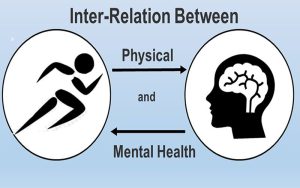
Hypertension, commonly known as high blood pressure, is a significant health concern affecting millions of people worldwide.
While medication is often prescribed to manage blood pressure, adopting a healthy lifestyle and making dietary changes can
greatly contribute to reducing hypertension. One such dietary approach gaining popularity is the DASH diet. This article will
discuss the DASH diet and its effectiveness in lowering blood pressure.
What is the DASH diet?
The Dietary Approaches to Stop Hypertension (DASH) diet is a balanced eating plan designed to lower blood pressure. It emphasizes
consuming nutrient-rich foods that are low in sodium, cholesterol, saturated fats, and added sugars. The DASH diet primarily
focuses on increasing the intake of fruits, vegetables, whole grains, lean proteins, and low-fat dairy products.
Components of the DASH diet
The DASH diet is composed of several key components:
1. Fruits and vegetables
The DASH diet encourages individuals to consume a variety of fruits and vegetables daily. These foods are rich in essential
vitamins, minerals, and dietary fiber, while being naturally low in sodium and cholesterol.
2. Whole grains
Incorporating whole grains such as brown rice, whole wheat, and oats into meals contributes to the DASH diet’s effectiveness.
Whole grains provide a good source of fiber, which aids in regulating blood pressure and overall heart health.
3. Lean proteins
Lean protein options, like fish, poultry, and legumes, are emphasized in the DASH diet. These protein sources are lower in
saturated fat and cholesterol compared to red meats, making them heart-healthy choices.
4. Low-fat dairy products
Replacing high-fat dairy products with low-fat or fat-free alternatives is essential in the DASH diet. Milk, yogurt, and cheese
are included but should be consumed in moderation.
5. Limiting sodium intake
Reducing sodium consumption is crucial in managing hypertension. The DASH diet recommends limiting sodium intake to 2,300
milligrams per day, or even further down to 1,500 milligrams per day for those at a greater risk of high blood pressure.
Benefits of the DASH diet
Several studies have demonstrated the numerous benefits of adopting the DASH diet:
1. Blood pressure reduction
The primary objective of the DASH diet is to lower blood pressure. It has been proven to effectively reduce systolic and diastolic
blood pressure levels, especially in individuals with hypertension.
2. Improved heart health
By focusing on nutrient-rich foods and minimizing saturated fats and cholesterol, the DASH diet promotes heart health. It helps
reduce the risk of cardiovascular diseases, such as heart attacks and strokes.
3. Weight management
The DASH diet encourages the consumption of whole, unprocessed foods that are generally lower in calories. By following this
dietary plan, individuals can maintain a healthy weight or even achieve weight loss goals.
Conclusion
The DASH diet offers a practical and effective approach to manage hypertension and improve overall health. By adopting this
dietary plan, individuals can experience significant reductions in blood pressure, enjoy improved heart health, and maintain a
healthy weight. Incorporating the principles of the DASH diet into one’s lifestyle can contribute to long-term well-being and
reduce the risk of chronic diseases.
Disclaimer: This article is for informational purposes only and does not constitute medical advice. Consult with a healthcare
professional before making any significant changes to your diet.

